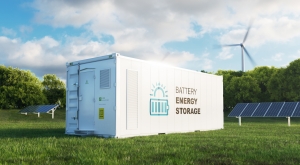At O3 Energy, we believe in crafting resilient, efficient, and sustainable energy solutions. One technology that’s proving central to that mission is battery energy storage systems (BESS). As grids evolve and renewable energy plays a larger role, adding storage isn’t just a “nice to have” — it’s becoming essential.
Below, we’ll walk through what BESS is, how it’s used in energy systems, and the real benefits you can expect from integrating it into your projects.
What Is BESS — In Simple Terms
A BESS stores electrical energy to use later. When generation (say from solar or wind) exceeds demand or when grid prices are low, the system charges. Later, when demand is high or prices spike, it discharges. This flexibility helps:
- Smooth out intermittent renewable sources
- Stabilize the grid
- Reduce energy costs
- Enhance resilience during outages
In effect, a BESS turns variable energy supply into a reliable, dispatchable resource.
Use Cases: Where BESS Fits in the Grid Landscape
BESS systems can be designed for many scales and contexts. Here’s how they’re typically categorized — and where they make sense.
Based on Location: Grid-side or Customer-side
- Grid-side (in front of the meter)
These systems support the grid directly. They absorb power when supply is high and discharge when demand rises, participating in grid services and stability support. - Customer-side (behind the meter)
Deployed at a facility or site, these systems provide backup power, peak shaving, or interruptible load relief — reducing costs and improving reliability for the end user. - Hybrid / renewable-coupled systems
A BESS can be paired with solar, wind, or other generation assets. It stores excess output and dispatches energy when the renewable source isn’t producing, acting almost like a “virtual generator.”
By Scale and Application
| Scale / Setting | Typical Use Cases | Capacity Range |
|---|---|---|
| Residential | Backup power, manage solar output, reduce bills | Several to tens of kWh |
| Commercial & Industrial (C&I) | Demand response, smoothing, emergency power | Tens of kWh to several MWh |
| Community / Microgrid | Serving multiple homes or shared loads | Hundreds of kWh to several MWh |
| Utility / Grid-scale | Frequency regulation, grid support, renewables integration | Several MWh to hundreds of MWh (or more) |
| Off-grid / Remote Sites | Provide full or partial power where grid is weak or absent | Varies depending on demand |
Each setting has its own design challenges, control strategies, and optimization goals — but the underlying storage logic remains the same.
The Payoffs: What You Actually Get from BESS
Investing in BESS unlocks tangible benefits across technical, operational, and environmental dimensions.
1. Grid Stability & Resilience
BESS can respond in milliseconds, absorbing or injecting power to maintain balance. That helps smooth out volatility, manage fluctuations from renewables, and reduce reliance on fast-start thermal plants.
2. Better Integration of Renewable Energy
By buffering surplus generation during peak solar/wind output, BESS allows you to use more clean energy rather than curtailing it. It reduces the need for spinning reserves and makes renewables more dispatchable.
3. Cost Optimization & Peak Management
Charge when electricity is cheap, discharge when prices are high. That arbitrage potential is especially valuable in markets with wide price volatility. Also, by shaving peaks, you lower demand charges, reduce stress on the grid, and defer grid upgrades.
4. Backup Power & Operational Continuity
For critical facilities — data centers, hospitals, industrial plants — BESS offers a fast, reliable backup when the grid fails. It can keep operations running seamlessly until secondary systems (like generators) kick in.
5. Supporting EV Infrastructure
EV fast charging demands bursts of power. BESS can buffer that load so it doesn’t overload the local grid. During outages, it can also support charging stations, improving reliability for EV users.
6. Emissions Reduction
Replacing or offsetting diesel peaking plants or generators with stored clean energy cuts carbon emissions and pollution. Even small displacements yield big environmental and financial wins in high-cost segments.
7. Future-Readiness & Grid Participation
In many markets, BESS can earn revenue via ancillary services (frequency regulation, voltage support), demand response, or grid services contracts. It positions your assets to compete in evolving energy markets.
How O3 Energy Thinks About BESS
At O3 Energy, our approach to integrating BESS is grounded in pragmatism and design flexibility:
- We size systems not just for today’s demand, but for future flexibility.
- We optimize control strategies — leveraging forecasts, market signals, and real-time data.
- We emphasize modular, scalable designs so systems can grow with evolving needs.
- We design for resilience, with redundant safety and control layers.
- We evaluate not just capital cost, but lifecycle value — energy savings, grid services, avoided maintenance, and emissions offsets.
In short, we don’t see BESS as a device you “add” to a project. We see it as a core component of modern energy architecture.
Final Thoughts
Battery energy storage is more than just a buzzword in clean energy. It’s a foundational technology for enabling the grid of tomorrow — smarter, cleaner, and more reliable. For organizations, utilities, communities, and projects that aim to thrive in this transition, BESS offers strategic value.
If you’re exploring how to include energy storage in your next project — whether paired with renewables or deployed as a standalone grid support system — O3 Energy is ready to help you design, deploy, and operate for optimal performance.


